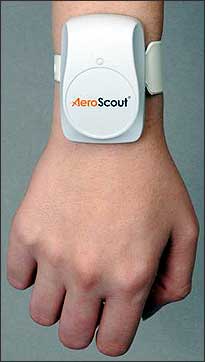Mexico’s central western coast is known as the birthplace of mariachi music and tequila. Now, it’s also home to the country’s first digital hospital. General Hospital, in Lagos de Moreno, Jalisco, is installing active Wi-Fi-based RFID technology to track patients, staff and assets. The deployment is part of a government-led initiative designed to improve patient care via high-tech hospitals throughout the country.
General Hospital worked with AeroScout to install the vendor’s RFID-enabled real-time location system (RTLS) at its two-story, 70-bed facility. The system incorporates active 2.4 GHz RFID tags and the Cisco Location Appliance, which calculates tag locations by processing data from the tags and various Cisco Wi-Fi access points. In addition, the system includes AeroScout’s MobileView software, which can portray location information on a map, in a table or in a report.

The digital-hospital initiative is driven by the Instituto Mexicano del Seguro Social (IMSS), the government-run Mexican Social Security Institute, which manages the country’s public health, pensions and social security programs. In addition to the RTLS system, several other digital technologies are also in use, including 3-D imaging, which has replaced traditional X-rays; teleconferencing, allowing doctors to consult with other physicians around the world in real-time; and electronic patient files and record keeping. The hospital is leveraging a lightweight, slate-style tablet computer based on Intel‘s mobile clinical assistant (MCA) platform, and a Wi-Fi network, through which the AeroScout RTLS system communicates.
In early 2007, says Ricardo Berrios, managing director for AeroScout Latin America, General Hospital began deploying AeroScout’s RTLS on the second floor of its facility, to track patients and staff. Several Wi-Fi access points have since been installed, enabling staff members to track patients wearing RFID wristbands as they move from their rooms to other areas, such as the imaging department. Two large LCD displays, affixed to walls, provide employees with an instant view of patients’ locations, represented by icons on the screens. Caregivers can also check patient locations via hospital computers and their MCAs.
Patients are assigned RFID-enabled wristbands upon admission. Each wristband tag contains a reusable active RFID Wi-Fi tag encoded with a unique ID number associated with patient data in a back-end system. When a patient is discharged, the wristband is cut and the tag is retrieved and sterilized for use by a subsequent patient. So far, Berrios says, General Hospital has about 250 to 300 tags in circulation.
Ultimately, all patients checking in to the hospital will receive the RFID-enabled wristbands, as will all doctors and nurses. In the next phase of the deployment, expected to be completed by year’s end, General Hospital will install the RTLS on its main floor, Berrios says. It will then begin tagging a variety of assets, including wheelchairs, stretchers and infusion pumps.
According to Berrios, the hospital believes the RTLS has already helped improve patient care. “That may be a very soft benefit,” he notes, “but that is the driver for this initiative. And the hospital staff says they’ve already accomplished better care because they have the ability to know when patients are moved from one place to another. That way, they are better able to serve the patients.”
What’s more, the RTLS and other high-tech tools implemented at General Hospital illustrate how the technologies can improve many aspects of health care—from patient care to operations such as asset maintenance—while also cutting costs. For instance, Berrios states, the digital imaging technology has reduced X-ray expenses by 90 percent, because the hospital no longer has to pay for expensive X-ray films.
With General Hospital as a benchmark for Mexico’s digital-hospital initiative, the IMSS approved the construction of a new hospital containing 300 to 500 beds, which will be digital from the ground up. “General Hospital is a showcase,” Berrios says. “They are learning from this implementation, and they can apply this to create and roll out other digital hospitals throughout the nation.”

